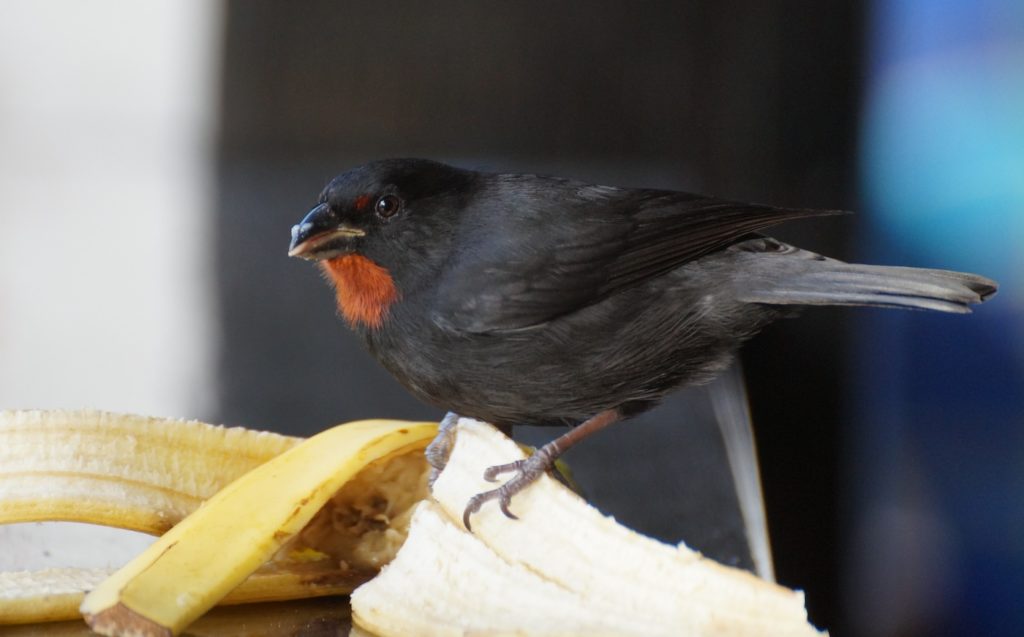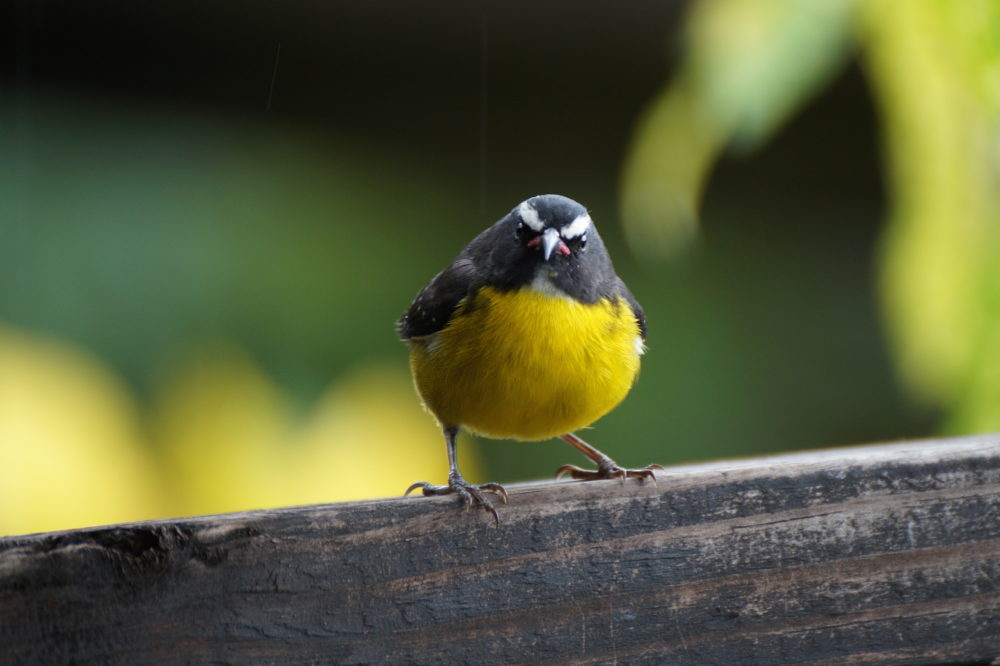In a series of blogs, Ed Drewitt freelance naturalist, broadcaster and wildlife detective takes us through the St Lucia Birding experience. In this edition he walks us through what to look out and listen for upon arrival at the resort.
Lead Photo: Bananaquit, Credit: Ed Drewitt
By: Ed Drewitt

Photo: Green-backed Heron, Credit: Ed Drewitt
As you leave the main coast road in Soufrière and head along the track to Anse Chastanet everything suddenly feels wilder. The track follows the cliffs where hidden houses and gardens are tucked away amongst the scrub. A little inland the terrain becomes forest and rises up towards Mount Lastic which stands at a modest 1100 feet above sea level. If you get the chance to stop, look across the bay, where a fine sailing boat or yacht is often anchored up, dwarfed by Mount Coubaril and Petit Piton as a backdrop and the sulphury steam of Sulphur Springs. As you enter the open lawns of Anse Chastanet keep an eye out for a Green Heron lurking in the shade, Starling-size Common Ground Doves and Carib Grackles.

Photo: Lesser Antillean Bullfinch on Banana, Credit: Ed Drewitt
As you quench your thirst in the reception bar on arrival the first birds you see will be the Bananaquits and the Lesser Antillean Bullfinches; you’ll see both species around your balconies, bars and down by the beach too. The Bananaquits are small, black and white with a bright yellow breast and a short, downcurved beak. They love the sugary nectar of Anse Chastanet’s many beautiful flowers and won’t say no to the odd fruit juice or sugar sachet either! If a tree is in blossom, they will flock to the nectar. The bullfinches are equally bold and on the lookout for food. They are slightly larger, chunkier birds with a short thick beak, ideal for opening seeds or devouring flower buds. The males are black with a red chin and a small red spot behind the eye. The females are a warm, sandy brown color.

Photo: Male bullfinch at breakfast, Credit: Ed Drewitt
If you arrive late afternoon, it won’t be long before the light begins to fade and by 6pm the Common Free-tailed Bats will be flying out through the forest to feed. As dusk prevails you will begin to hear the squeaky bleeping sounds of tiny – one cent or one penny size – whistling frogs. Males defend patches of land or territories all across Anse Chastanet, ‘bleeping’ to defend their spaces and attract females. You may occasionally spot them on the floor of your room – a gentle coaxing back out is all they need. The lights along the pathways are good places to spot them as they lay in wait for small insects, attracted to the lights, to land before they quickly devour them!
At dusk the sound of whistling frogs can be heard. New visitors to tropics will notice this sound more so at first but the sound fades quickly into background white noise.
As day gives away to night the frogs will quieten down, often replaced by the grating songs of crickets and cicadas. As morning arrives and dawn breaks, there is a whole new world to listen to, revealed in my next blog.
Ed Drewitt is a freelance naturalist, broadcaster and wildlife detective
Learn More About Bird Watching at Anse Chastanet here

Leave a Reply